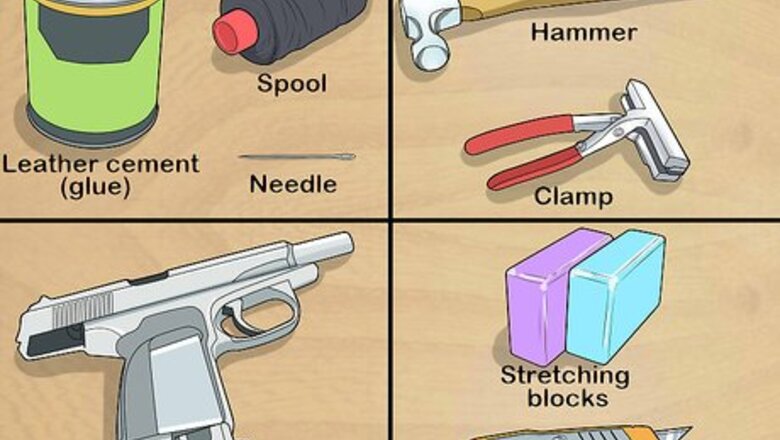
views
Gathering Your Materials
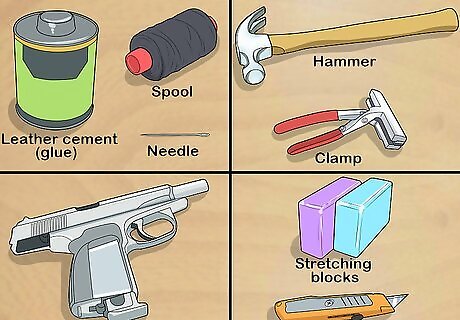
Buy your tools. You can save a good deal of money if you buy your materials and make your shoulder holster instead of buying one. Spool of heavy string for stitching Stretching blocks (small pieces of wood that will hold the leather in place) Needle Razor knife Pronged punches (3 or 4 prongs work) Leather cement (glue) Hammer Clamps (to stretch the leather) Mold of your pistol (you can make this from wood or omit the mold and use your actual pistol) Empty weapon
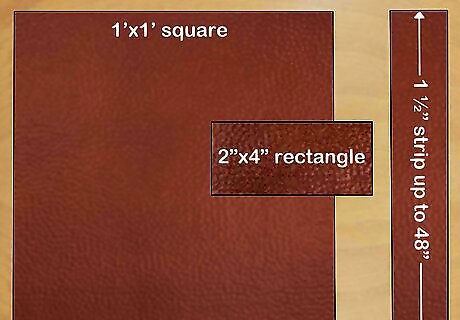
Get the right amount of leather. You'll need quite a bit of leather to make your own shoulder holster. Make sure to buy enough, even if it doesn't match—you can dye it when you're done. 1'x1' square 1 ½” strip up to 48” 2”x4” rectangle
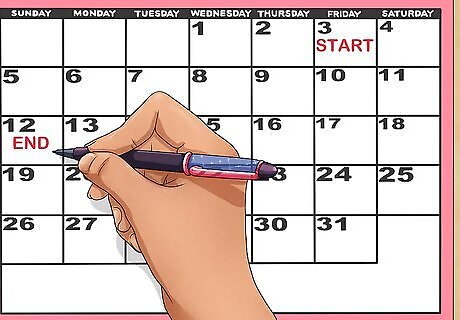
Make a time frame. This project will take multiple days to accomplish. However, if you spread it out too long, your leather will be more difficult to work with. Try to keep to a time frame that's less than a week to make your shoulder holster.
Stretching Your Leather
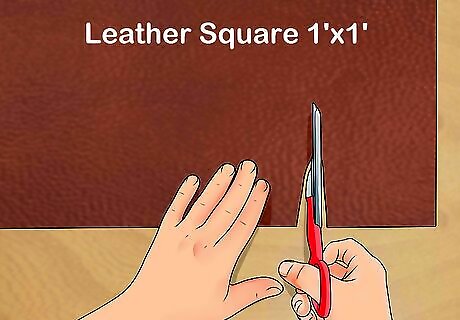
Begin with a leather square. 1'x1' is a good starting size for this piece of leather if you're working with a standard pistol. For a larger handgun, cut it to make sure you can wrap your weapon in it. You'll be making the pocket that holds your weapon with this piece; this is the holster. Fold the leather in half over the top of your weapon. When you do so, the handle should stick out. This is how you would grab your weapon if you need it.
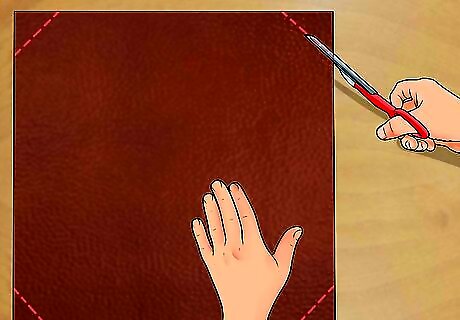
Cut the top corners off of your square. Using scissors or a utility knife, cut triangles out of the top corners. Your triangles should be an inch tall for a pistol. For a larger gun, you can cut up to 3” off. You should easily be able to fold the leather over your weapon and have a spare inch. This will be plenty of material to work with because it will stretch.
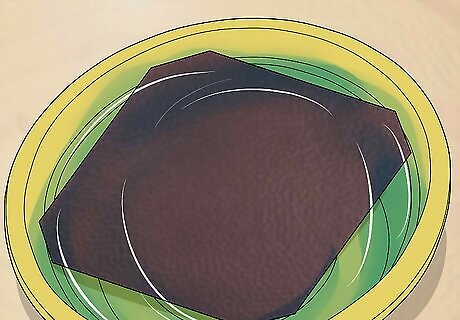
Soak your leather. Take your leather and soak it thoroughly in water. This will take a few minutes. Eventually, it will become pliable. Once this happens, squeeze the excess water out of it. The side of the leather than is less tough is the inside of your leather. This side will soak water in better than the rough face of the leather.
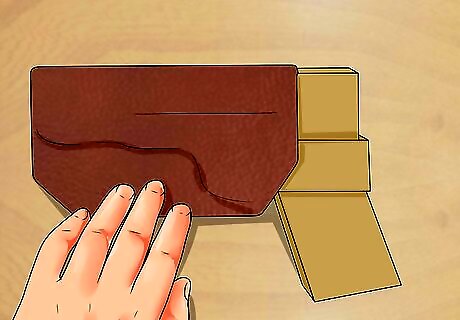
Wrap your leather around the mold of your pistol. Do this with the middle of the leather piece over the barrel and have it wrap under the trigger. Using stretching blocks, put pressure on the leather around the mold and stretch it out. You should have one block on each side of the leather and it should be as close to the mold as you can. This will help the leather stretch once you clamp the blocks into place. You can use any clamps that you want, as long as they will hold the blocks in place tightly.
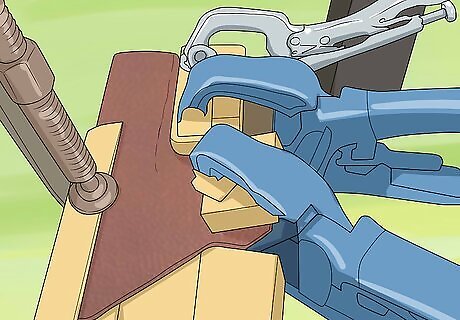
Place this in the sun. With the clamps holding the blocks, and the mold wrapped in the leather, place it in the sun to dry. This will take a few hours.
Making Inserts
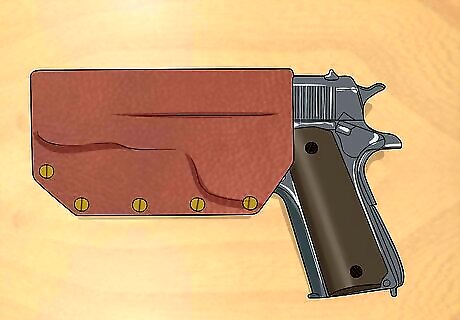
Stiffen your holster. Making inserts in your holster will help stiffen it. This helps hold your weapon safely and securely.
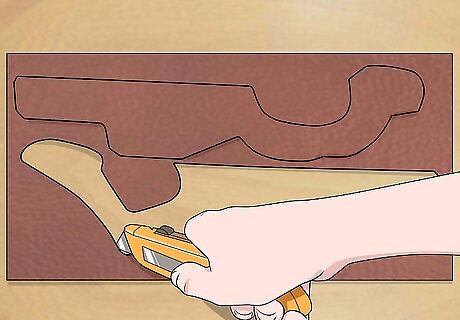
Cut your inserts. You're going to need a right, left, and top insert. Simply trace the sides and top of your weapon with a marker onto the inside of your leather. Rough cut it to be the size of your weapon. Cut it with your razor knife. Place a piece of spare leather between the leather that you're cutting and the table. This protects your table and your razor blade. Cut it bigger rather than smaller. Cut along the outside of the line that you've traced. This way you can match them up and cut them down until they are perfect. It is possible to cut them down more and more, but if you start off by cutting too much off, you can't add to it.
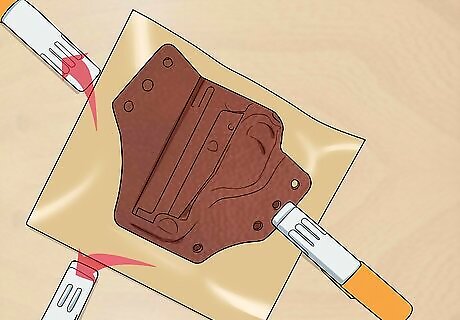
Get your leather holster from outside. After a few hours, go get your holster. It will still be damp, but when you take off the clamps, it should be starting to hold the shape of your mold. Dampen the outer piece of the holster once again. You want it about ¾ as damp as the original time that you dampened it. This means it will be wet, but won't leave water on your hand when you touch it.
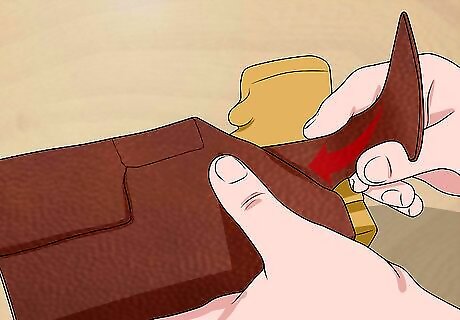
Place your inserts on the inside of the leather, around your weapon. Use the empty weapon instead of your mold this time. It will give the leather a better fit around it. Use your stretching blocks and re-clamp them over your holster with the mold and inserts inside. Place your holster back in the sun to dry.
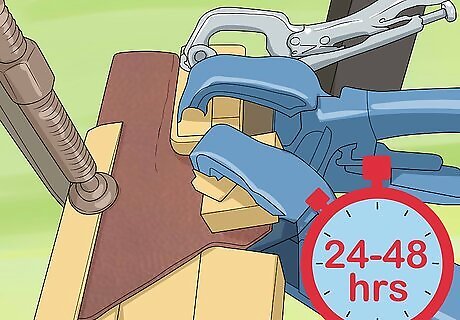
Let it sit for 24-48 hours. The longer you let it sit and dry, the better shape it will hold on its own. If you don't let the leather set in the proper position, your weapon won't fit correctly. This could cause it to fall out of the holster, or it could create difficulty for you when trying to get it out.
Stitch Your Inserts
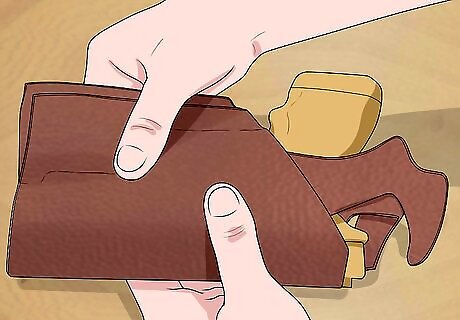
Look for the right fit. When your leather dries, you should see that is has stretched tightly around your weapon. You'll be able to see where the sights (the clip on the top of the gun) are by a noticeable bump in the leather on the top of your gun.
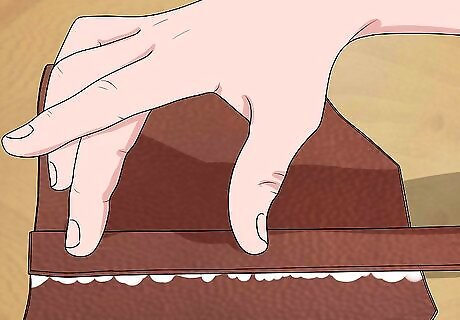
Glue your top insert into your holster. Clamp your blocks with the holster and top insert between them to help the glue take. Scuff the leather with a knife to help the glue hold a little bit better.
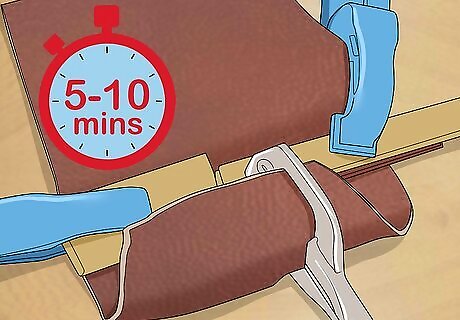
Give it a few minutes. This glue will dry quickly: 5-10 minutes is all it takes. When it is dry, remove the clamps. With your top insert glued in, wrap your leather around your weapon once again to check the fit.
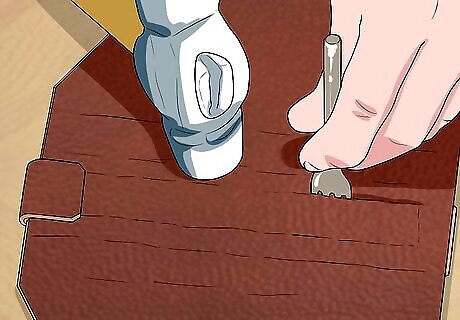
Use a pronged punch and a hammer. You're going to stitch your insert to your holster with your needle and heavy string. Using the pronged punch will help to create the stitching holes will make it possible for you to get the needle through the leather. If you don't use one, it will be too difficult to get the needle through. A pronged punch looks like a fork. Simply place it with the prongs facing into the leather, lined up where you want to make indents. Hold it steady and hit the top of the punch with your hammer. The prongs will go into the leather, but not all the way through. Pull the punch out and continue doing this all the way around your insert.
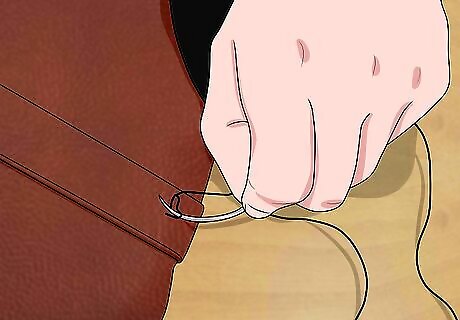
Use a curved needle. Go through your stitch holes with the needle and string until your top insert is permanently secure. Start wherever you'd like on your holster and go all the way around. Finish is the same stitch hole that you started in. Knot your string onto your needle to make it easier for you. This will take a lot of strength to get the needle through the leather. Keep using the guide-holes that you made with your pronged punch. If you miss a hole, take the needle back through the way it came and fix it. Your leather will pull unevenly if you don't.
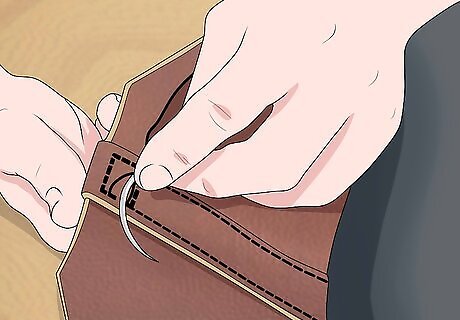
Go double over your last stitch. To finish your stitching, stitch through your original hole twice. This will help your stitch hold strongly for the life of your holster.
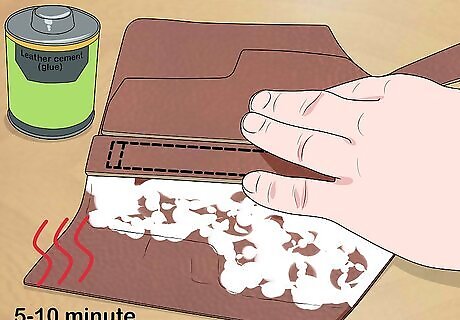
Glue your side inserts into your holster. Let the glue dry for 5-10 minutes again. Again, use the prong and your curved needle and string to stitch these inserts to your holster.
Finish the Holster
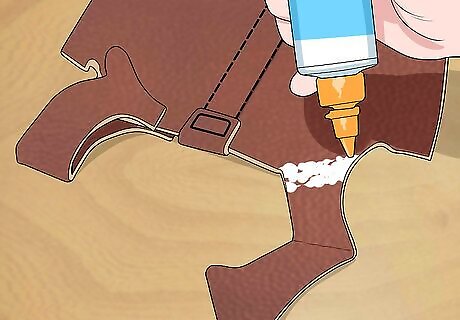
Glue the rest of the holster. When you fold your leather down, you'll still have extra fabric on the bottom. With your weapon in the leather, fold it over and glue the leather in place. Don't be afraid of getting the glue on your weapon—it will come off. Use your clamps one more time to help secure the glue.
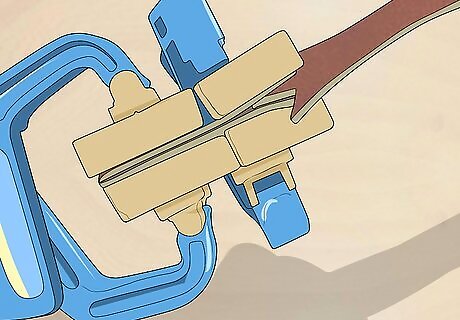
Give it time to dry. Once the glue dries, test out how your weapon will pull out of the holster. If it is a snug fit, you can sew this last part together. Once again, take your prong and make stitch indents around the shape of the bottom of your weapon. If you make the stitch too close to where your weapon sits, you won't be able to fit your weapon in your holster. If you need to, you can keep the weapon in the holster while you stitch the remaining side. #Clean you edge. After this stitching is done, use your knife to finish shaping your holster. Be sure to leave 1/8” of leather from your stitching so that your stitching doesn't get loosened over the years.
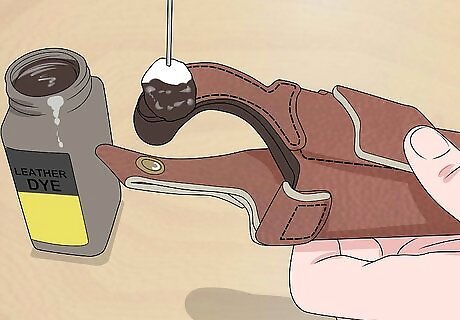
Dye your holster. If you wish, you can buy leather dye and dye your holster. This is only for cosmetic purposes, and totally up to you.
Adding the Strap
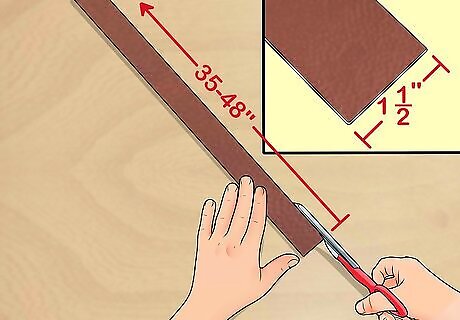
Cut 1 piece of long leather for the strap. This should be 1 ½” wide and long enough to go around your shoulders and meet in the middle of your back. An easy way to measure this is to make a figure eight and putting your arms through it. This is usually going to be from 35”-48”.
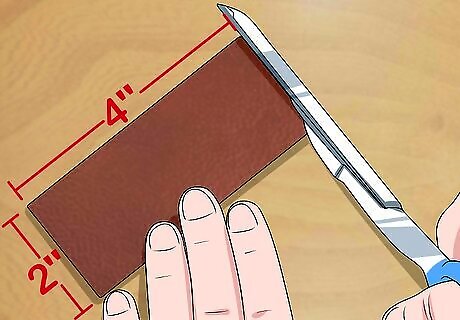
Cut a 2”x4” rectangle out of another piece of leather. This is going to sit on the center of your upper back. Sew the middle of the long strap to the bottom of the rectangle.
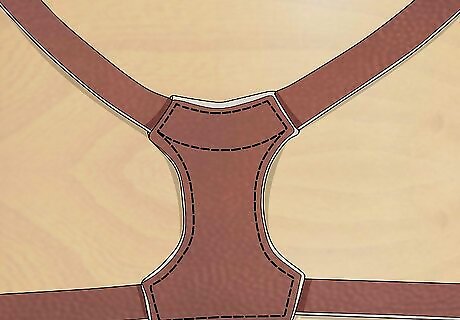
Loop the right side up to the top of the rectangle and sew it stable. Do the same with the left side of the strap. This is going to form your arm loops.

Attach the holster. If you're a righty, use your leather cement to attach your holster to the left shoulder strap. Put the straps on and mark where you'd like to have the holster. Once it's marked, take the straps off and use your cement to attach it. Use your clamps and let it sit for at least 10 minutes while the cement dries. Attach your holster in a place that is concealed, comfortable, and in easy reach.
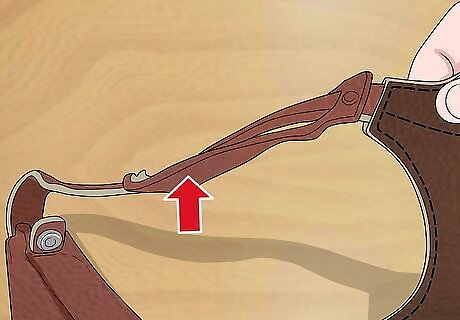
Secure your holster. The leather cement will hold your holster in place. However, if you wish to add extra support, you can use another strip of leather. Place a small strip of leather (no more than 3”) and lay it on your holster, over the strap. Stitch this strap onto both the holster and the strap. It will take a lot of strength to attach this strap because you will be going through up multiple layers of leather. Be sure to use your prong punch and hammer to create insertion holes for the stitches.

















Comments
0 comment